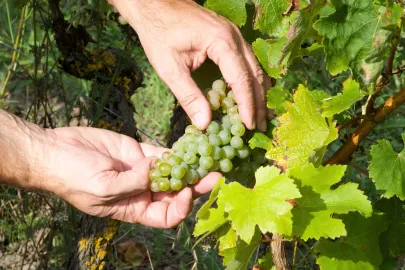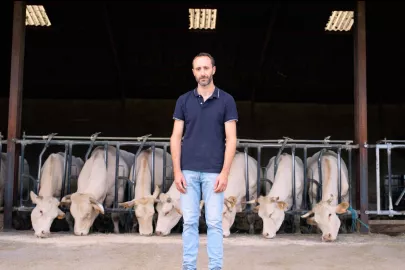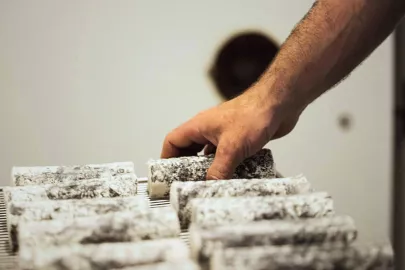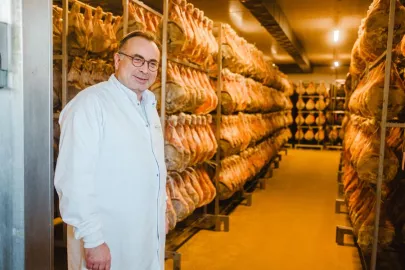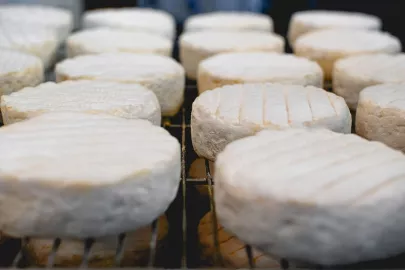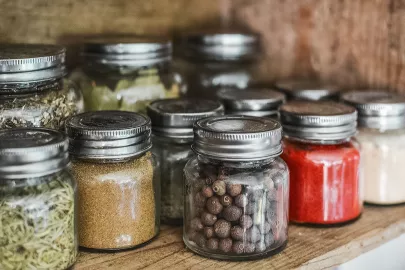Puy green lentils owe their unique taste to the special climate where they are grown, at altitudes of between 600 and 1,200 meters (about 2,000 to 4,000 feet) in Haute-Loire, southwest of Lyon. We met up with Philippe Gire, one of the region’s 650 farmers.
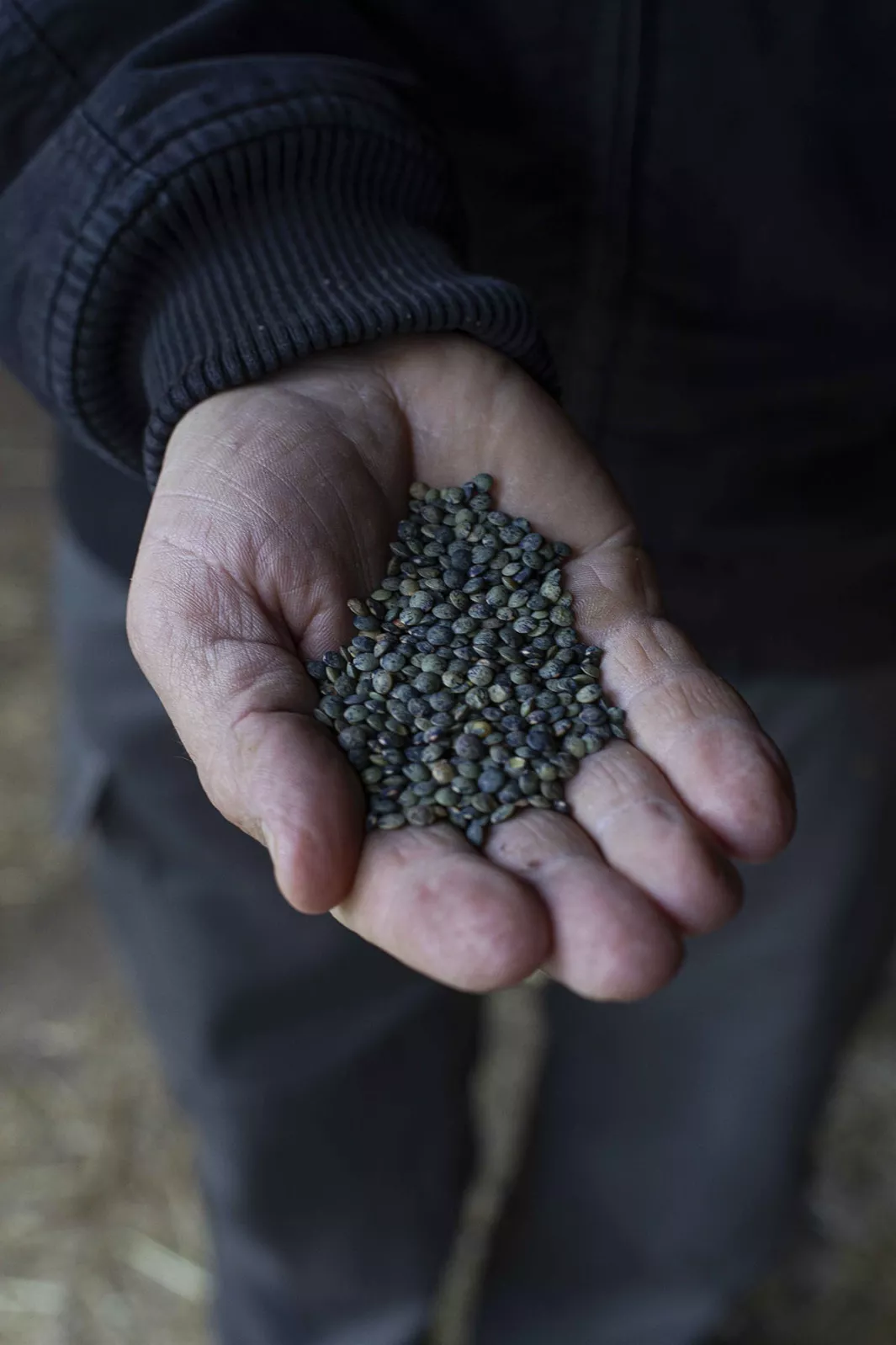
The year is drawing to a close and we’re in the small village of Saint-Martin-de-Fugères, in the Auvergne region, where the surrounding fields are covered with a fine layer of dew crystallized by the cold. At the Les Pis d’Anicia producers’ association, Philippe and Sandra Gire harvested their green lentils back in the summer. “We usually harvest them between August 10 and 15, when they reach about 4 millimeters (about 1/8 inch) in diameter.
This year, the rain and cold delayed the harvest a week or two,” says Philippe. Puy green lentils are generally sown around April 20, when the soil has had enough time to warm up after the winter. Their blue glints come from the anthocyanins in the cells – the same pigments that give blueberries and black grapes their color.

© ©PHILIPPE VAURÈS SANTAMARIA.jpg
A popular companion crop
The Puy green lentil became the first legume to adopt Protected Designation of Origin (PDO) – and the farming requirements that entails – in 2009. The PDO now covers more than 650 producers spread across 87 towns in the Haute-Loire department, and is exported to over 70 countries worldwide. “One particularity of the lentil is that it isn’t the primary crop on a farm, but a companion. Most producers in these parts farm multiple crops and livestock. Personally, since my arrival here in the 2000s, I’ve always split my time between growing heirloom wheat, farming about 50 dairy cows, and… lentils,” adds Philippe. He is one of the producers with organic certification, who are few and far between, but the designation is leading the way to sustainability in other areas – both fertilizer and irrigation are prohibited.

© ©PHILIPPE VAURÈS SANTAMARIA
The caviar of legumes
The Anicia variety, named after the ancient Roman town now Le Puy-en-Velay, reaches between 20 and 30 centimeters (8 to 12 inches) in height at maturity. Its oblong pods generally enclose two seeds, which are removed using a combine harvester and stored in silos or large refrigerators.

© ©PHILIPPE VAURÈS SANTAMARIA
Depending on the year and humidity, part of the harvest may require some time in a dryer to ensure optimal shelf life. Then it’s on to the stove! Philippe tastes a hint of chestnut in the lentil, known to some as “Velay caviar.” He holds the legume in high regard: “It’s the only variety that has such fine skin, which produces a seed that isn’t mealy and stands up well to cooking.” The farmer recommends immersing the lentils in unsalted cold water and starting the timer for 20 minutes when the water reaches a boil. In the region, the legume is prepared as a soup, or with a few carrots and a smoked sausage in the famous petit salé aux lentilles. At Anicia, a restaurant in Paris helmed by Le Puy-en-Velay native François Gagnaire, the chef has come up with a playful twist: lentil crème brûlée!
Bon appetit ;)

© ©PHILIPPE VAURÈS SANTAMARIA
Contributor

Editor

